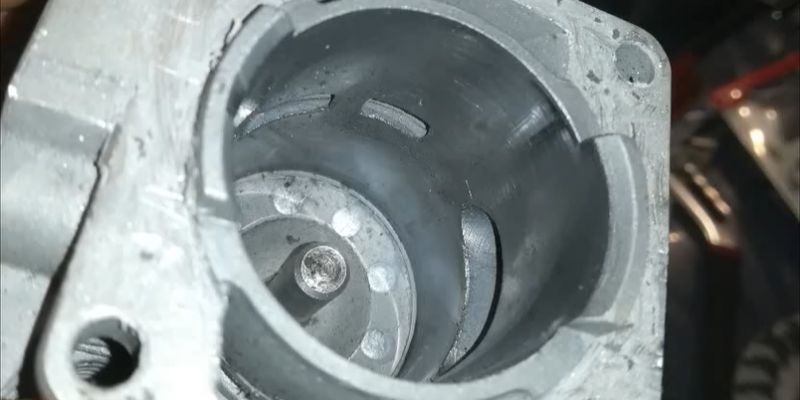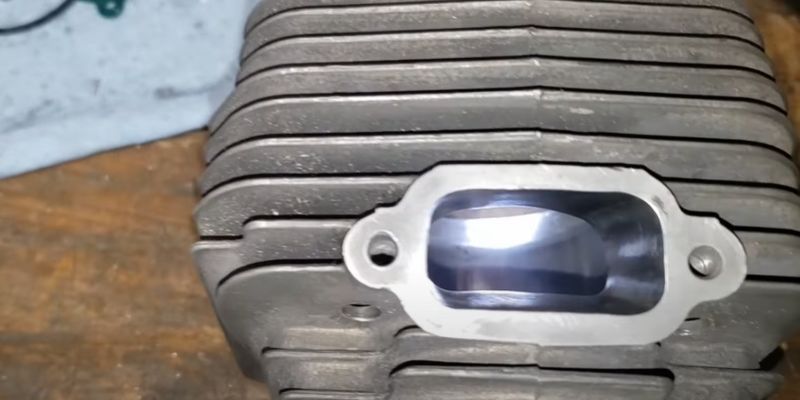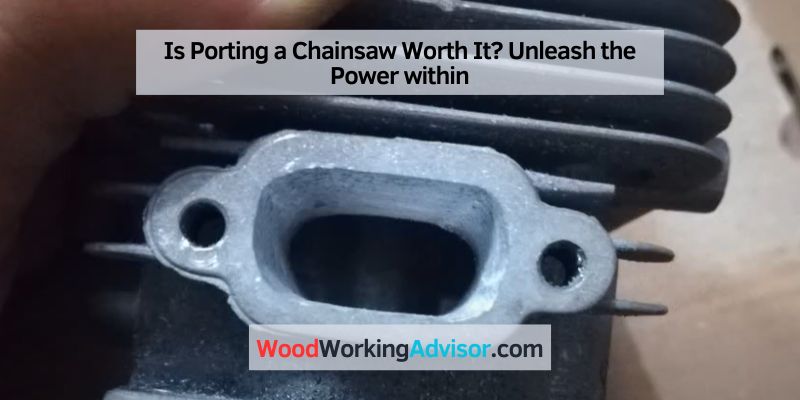Porting a chainsaw is worth it as it can increase the performance and power of the tool. The process involves modifying the internal components to optimize fuel flow and airflow, resulting in improved cutting performance and faster cutting speeds.
Porting can also enhance the overall efficiency of the chainsaw, making it more fuel-efficient and reducing emissions. Additionally, porting allows for greater customization options, enabling users to tailor the chainsaw to their specific cutting needs. Whether it’s for professional use or personal projects, porting a chainsaw can provide significant benefits in terms of performance and efficiency.
Step-by-step Guide To Porting A Chainsaw
Porting a chainsaw is an effective way to increase its performance and power. If you’re a chainsaw enthusiast who loves taking on DIY projects, porting your chainsaw could be a rewarding endeavor. However, it’s important to remember that porting a chainsaw is not for everyone. It requires precision, patience, and the right tools. In this step-by-step guide, we will walk you through the process of porting a chainsaw, from gathering the necessary tools to tuning and testing the final result.

Gather The Necessary Tools And Materials
Before you start working on porting your chainsaw, it’s important to gather all necessary tools and materials. Here is a list of items you’ll need:
| Tools | Materials |
|---|---|
|
|
Disassemble The Chainsaw
The next step is to disassemble the chainsaw. Start by removing the spark plug, guide bar, and chain. Use the chainsaw wrench and screwdriver set to loosen and remove screws, taking care to keep track of each component you remove. Refer to the manufacturer’s manual if you need assistance in identifying and removing specific parts.
Clean And Inspect The Chainsaw Parts
Once the chainsaw is disassembled, take the opportunity to clean and inspect each part. Use a nylon brush and carburetor cleaner to remove dirt, debris, and old oil from the surface of the parts. Inspect the cylinder, piston, and other components for any signs of wear or damage. Cleaning and inspecting these parts will ensure you have a clear view of what needs modification or replacement.
Modify The Cylinder And Piston
Porting involves modifying the cylinder and piston to improve airflow, which in turn increases the power output of the chainsaw. This step requires precision and careful measurements. Use a caliper to measure the existing ports and transfer those measurements onto the cylinder wall. Then, using appropriate files and sandpaper, carefully remove excess material to enlarge and shape the ports according to the desired specifications. Take your time during this step to ensure accuracy.
Reassemble The Chainsaw
With the modifications complete, it’s time to reassemble your chainsaw. Refer to the manufacturer’s manual to guide you through the process. Make sure each component is securely attached and tightened using the appropriate tools. Replace any worn gaskets and apply a thin coat of anti-seize compound to prevent future corrosion. Double-check that all screws and bolts are tightened correctly before moving on to the final step.
Tune And Test The Ported Chainsaw
The last step is to tune and test your newly ported chainsaw. Start by adjusting the carburetor settings according to the manufacturer’s specifications. Ensure the air filter is clean and properly installed. Once the tuning is complete, start the chainsaw and let it idle for a few minutes before revving it up. Observe the chainsaw’s performance, paying attention to any strange noises or vibrations. If necessary, fine-tune the carburetor settings to achieve optimal performance. Only when you’re satisfied with the performance should you consider the porting process complete.
Is Porting A Chainsaw Worth It?
When it comes to maximizing the power and efficiency of your chainsaw, porting can be a tempting option to consider. Porting involves modifying the intake and exhaust ports of the chainsaw’s engine to increase its performance. While it may seem like a great way to get more out of your tool, there are several factors to consider before diving into the porting process.
Increased Power And Performance
One of the main reasons why people choose to port their chainsaws is to experience a significant boost in power and performance. By enlarging the intake and exhaust ports, more air and fuel can flow into the engine, resulting in increased RPMs and cutting speed. With this enhanced power, you can tackle larger and tougher wood pieces with greater ease and efficiency.
Improved Cutting Efficiency
Porting a chainsaw can also improve its cutting efficiency. The increased airflow provided by the modified ports allows the engine to maintain high RPMs even under heavy loads. This means that your chainsaw will be less likely to bog down or stall during demanding cutting tasks, resulting in smoother cuts and reduced effort on your part.
Potential Drawbacks And Risks
While porting can offer enticing benefits, there are also potential drawbacks and risks to be aware of. The most significant one is the potential damage to the engine if the porting process is not done correctly. Modifying the ports requires precision and expertise, as even a slight mistake can cause irreparable damage to the engine. Additionally, modifying the engine’s ports may void the manufacturer’s warranty, so it is essential to carefully consider the potential risks before proceeding.
Professional Vs. Diy Porting: Which Is Better?
When considering porting your chainsaw, you have two options: hiring a professional or attempting the process yourself. While DIY porting may save you costs initially, it is a complex and delicate procedure that demands an understanding of the chainsaw engine’s inner workings. If you do not have the necessary experience and knowledge, it is recommended to consult a professional. They will have the expertise and tools required to perform the porting process accurately, minimizing the risk of damage and ensuring optimal results.

Frequently Asked Questions For Is Porting A Chainsaw Worth It
Is Porting A Chainsaw Worth It For Better Performance?
Porting a chainsaw can significantly improve its performance by increasing power and efficiency. This process involves modifications to the engine’s ports to allow better airflow and fuel mixture, resulting in increased cutting speed and better overall performance. However, it’s important to note that porting should only be done by experienced professionals to ensure optimal results and prevent damage to the chainsaw.
How Does Porting Affect The Chainsaw’s Performance?
Porting a chainsaw improves its performance by optimizing the airflow and fuel mixture within the engine. This allows the chainsaw to generate more power, resulting in faster cutting speed and improved overall performance. However, it’s crucial to have a thorough understanding of the chainsaw’s mechanics and expertise in porting techniques to achieve optimal results.
What Are The Potential Risks Of Porting A Chainsaw?
Porting a chainsaw carries certain risks, especially when done by inexperienced individuals. Mishandling during the porting process can result in engine damage, reduced lifespan, and potentially unsafe operation. It is crucial to have a professional with expertise in chainsaw porting carry out the process to minimize these risks and ensure that the chainsaw performs at its best without compromising safety.
Conclusion
Porting a chainsaw can be a worthwhile investment for those looking to maximize performance and efficiency. By optimizing the airflow and fuel mixture, porting allows for increased power and reduced fuel consumption. However, it is important to consider the cost and potential risks, as improper porting can damage the saw.
Ultimately, with careful consideration and professional assistance, porting can greatly enhance the functionality of your chainsaw, making it a valuable tool for any arborist or DIY enthusiast.


